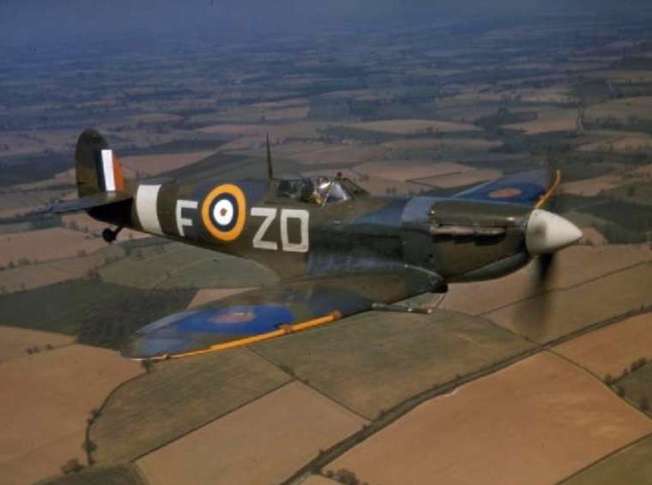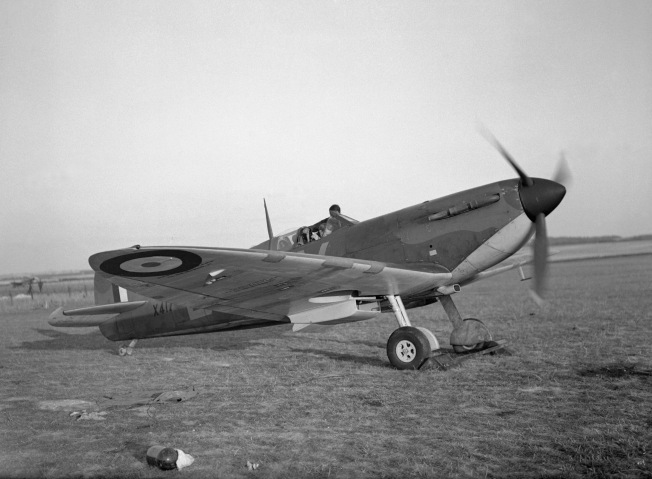Very interesting article about the Spitfire
But also this impressive comment
The Spitfire’s tactical strong points are probably among the most poorly understood of WWII fighters. It is generally an overrated but capable design. Here are some salient points of its tactical advantages/disadvantages.
#1: It did not turn that well (inferior to both the Hurricane and the FW-190A in prolonged turning, according to RCAF pilot John Weir, and many combat accounts demonstrate this very well, including those by top ace Johnny Johnson): The Spitfire’s wing for some reason displayed poor lift while turning, but excellent 3 axis control while stalling: This, combined with overly light elevators, allowed it to stall and turn itself to point “inside the circle”, in effect allowing to briefly shoot “across the circle” while stalling: The powerful 20 mm wing guns often made this brief advantage pay off. Most of the time, with an average 2% hit rate, the target had to be shot at a long time, which made turning dogfights far more important in WWII than is generally acknowledged.
The Spitfire sustained turns poorly, so much so Russian tactics had to be adapted when they used this aircraft (they even tried removing the outer guns to help it), the Russians being forced to use instead dive and zoom tactics to which the Spitfire was well adapted (as did most users of the Spitfire, including the RAF). However, its light elevators did allow some harsh initial turns at high speed, giving the impression of a high turn rate after a dive, again helpful in diving attacks.
#2 It rolled poorly: This is well established, but less well-known is that it was actually one of the poorest of all WWII fighters in roll at higher speeds: This was not so pronounced at high altitudes, because the thinner air was more forgiving to its flexible wings, and its low lateral stick leverage.
#3 It was a great diver: For extreme high speed dives from high altitudes, it was one of the better WWII propeller fighter aircraft, superior in diving speed even to the US fighters, until denser lower altitude air was encountered, where its lack of wing rigidity allowed US fighters to overcome it. Again this was a feature favourable to diving and zooming attacks, which is how it was actually used.
#4 It was an extremely good climber: Little emphasized is that the +25lbs boost LF Mk IX probably had the highest climb rate of any WWII piston engine fighter below 20 000 feet. Again a feature helping vertical fighting and dive and zoom tactics.
As a fighter it was forgiving to novice, and its engine kept up with the pace of development: Its short range severely reduced its usefulness.
One on one it was a match to the Me-109, but much inferior to the FW-190A in overall maneuverability, particularly for roll and sustained horizontal turns, but far superior on the vertical plane where the 190 was very poor. It roughly matched the P-51, and far outclimbed the P-47, but like the FW-190A, the P-47 was better on sustained horizontal turns, which is why almost all combat accounts have the big fighter obsessively used in turns, especially vs the Me-109, while the Spitfire climb and dived.
As to the airframe cost in man-hours, I would point out that the relevance of this may depend on the industry: With an excess of labour and a lack of machinery, and especially materials, it might make sense to go for a labour-intensive design that is economical in materials: The engine is the most costly item in any case… Pilot training is also much more costly in time, and the pilot was always more valuable than his machine. In any case, whatever the case may be, the Spitfire did not provide any large superiority except for its climb rate, and maybe its handling at very high altitudes (25 000 feet plus).
Gaston



 Challenging the Spitfire is, due to its iconic status, always going to be a difficult thing to do. Nevertheless, after reading Jon Lake’s response to my earlier piece, I continue to assert that the Spitfire’s place in the history of World War II should be challenged.
Challenging the Spitfire is, due to its iconic status, always going to be a difficult thing to do. Nevertheless, after reading Jon Lake’s response to my earlier piece, I continue to assert that the Spitfire’s place in the history of World War II should be challenged. There are too many myths about the Supermarine Spitfire to list, but uppermost is the notion that it was in any way a war-winning weapon. In fact, it might have been a war-losing one had circumstances been different. Britain certainly didn’t need it, and in some respects would have done better without it. It was not a bad aircraft so much as the wrong aircraft at the wrong time.
There are too many myths about the Supermarine Spitfire to list, but uppermost is the notion that it was in any way a war-winning weapon. In fact, it might have been a war-losing one had circumstances been different. Britain certainly didn’t need it, and in some respects would have done better without it. It was not a bad aircraft so much as the wrong aircraft at the wrong time.